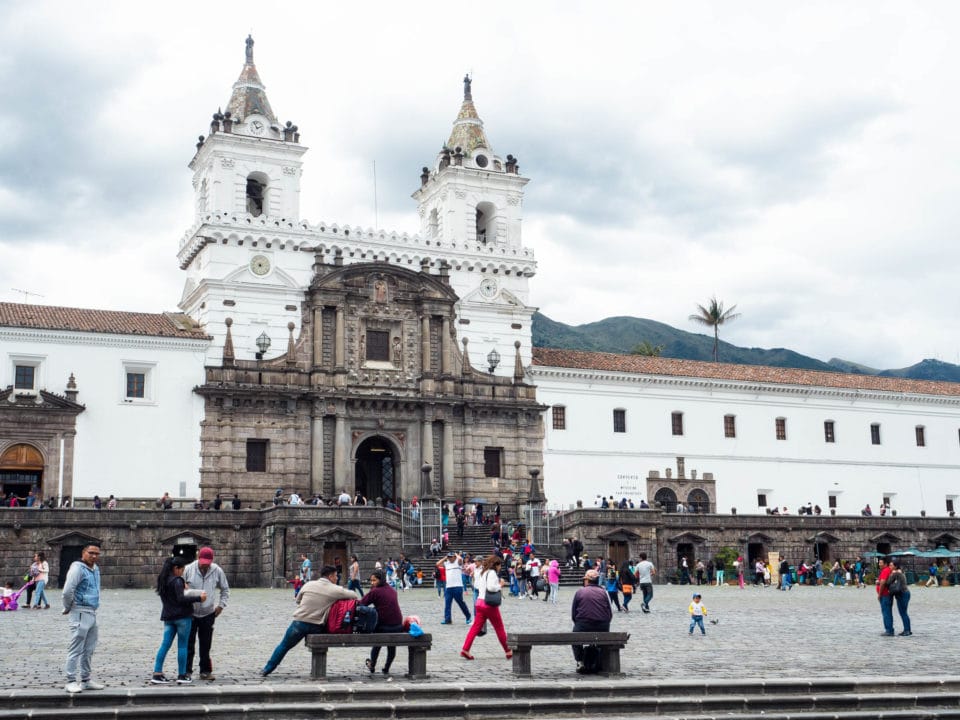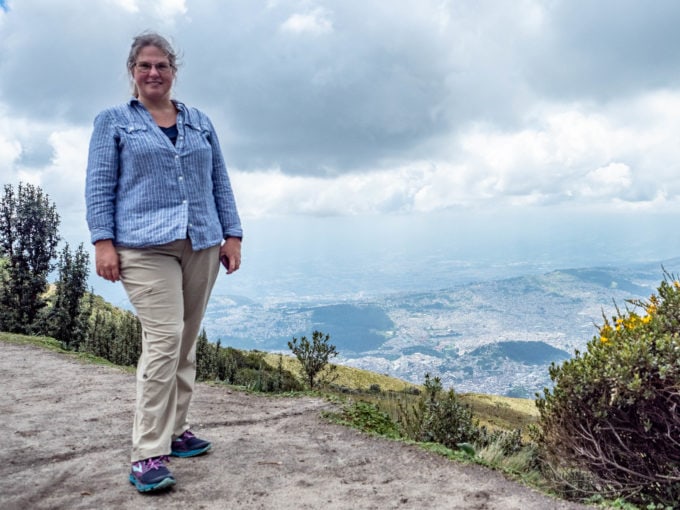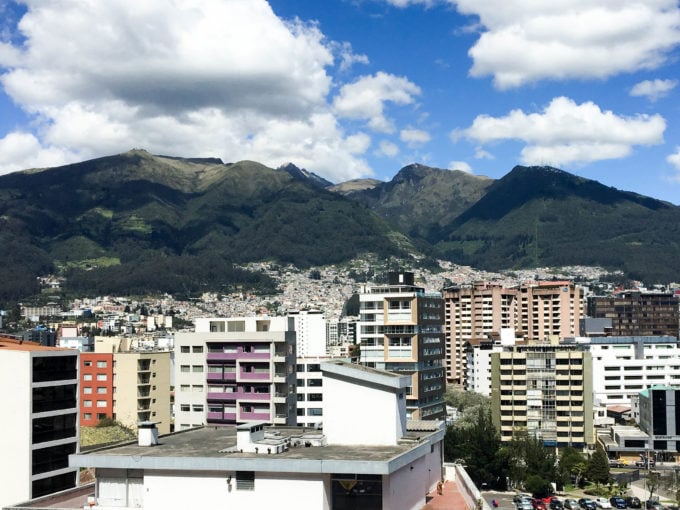A quick flight from Bogota to Quito, the capital of Ecuador, and we were well and truly in the Southern Hemisphere. Quito is a big city (population 2.6 million), sprawling from north to south along a wide valley. It’s also a high city, at an altitude of 2,850 m (9,350 feet).
We stayed in a series of AirBnB apartments in modern, high-rise buildings in the northern part of the city, first in the business and shopping district of Benalcazar and then in the funky residential and restaurant district of La Floresta. We found taxis to be cheap, safe, and plentiful in Quito, so it was easy to travel south to the historic colonial center of the city, full of lively plazas and old churches, some of them lavishly decorated.

We didn’t plan to spend 19 days in Quito, but we lost the first 10 or so days to feeling rotten. At first we thought it was just the effects of altitude, but when that didn’t wear off after a few days, we realized that we both had intestinal issues (one of the hazards of foreign travel). Once we’d knocked those out with antibiotics, we finally felt up to sightseeing.
We took a hop-on/hop-off bus around the city on a rainy day to get our bearings. Later, we walked around the historic district, people-watching on a Sunday when streets were blocked off and full of vendor’s stalls and musicians.
Quito is home to many people who’ve come from elsewhere in Ecuador, so it was the first time we saw indigenous-looking Andean women in their typical dress: felt fedora hats, wool shawls, and wide pleated skirts.

We visited some museum exhibitions about the history of Quito and Ecuador, the country’s ethnic groups and traditional crafts, daily life in a convent in the colonial period, and modern Ecuadoran art. They were mildly interesting but not fantastic.
On a clear day, we rode the TeleferiQo cable car up Pichincha, a green volcano that towers over Quito. The cable car is one of the highest in the world. But unlike cable cars in the Alps, which are supported on tall pylons, the TeleferiQo travels close to the ground because Pichincha doesn’t get much snow. The view over the sprawling city was beautiful, although the short uphill trudge from the cable car station to the viewpoint (at more than 13,000 feet) left us breathless.
I had an amazing stroke of luck on the mountain: When I got out of the cable car, I saw two large buzzardy-looking raptors circling high overhead. I got a good look at one in my binoculars, and from the markings, I was able to identify it later as a male Andean condor—Ecuador’s national bird and the largest flying bird in the world!
Surveys suggest that there are only about 100 condors left in Ecuador, so it was amazing that I got to see two of them so easily.
Our last apartment in Quito had a wonderful view of Pichincha from the living room. So as we worked on editing projects, we could watch the changing light and clouds on the mountain throughout the day. (It reminded us of mountain-watching from our summer housesit in Switzerland.)

To celebrate feeling better, we treated ourselves to a special getaway: a night at the Termas de Papallacta, a hotel built over hot springs in the mountains a couple of hours east of Quito. The hotel grounds are dotted with outdoor warm-water pools of varying temperatures (from tepid bathtub to “feels like you could cook a lobster”), which they achieve by mixing the hot spring water with cold water from a nearby stream in different proportions. Some of the pools have whirlpool-type jets or stone lounging beds built right in.
Lying in the water on a misty afternoon, surrounded by beautiful flowers and hummingbirds, watching clouds roll down the green mountains all around us was wonderfully relaxing. So much so that the three hours of sloggy bus and taxi rides it took to get there were totally worth it for a few hours of supreme relaxation.


